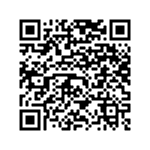6 Preventing Challenging Behaviours with Dr. Laura Riffel
Educators are among the most critical influence on a child. Still, it’s no secret that managing behaviour issues in the classroom are what teachers struggle with most. Children’s emotional and life challenges can create problem behaviours that may seem complex. But when a student’s behaviours are monitored and evaluated correctly, educators can discover the appropriate intervention to modify the problem behaviour. The modifications made in a classroom can set a child up for success or failure. But are some children simply too challenging to respond to such classroom modifications?
Dr. Laura Riffel
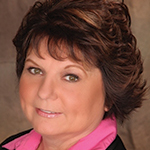
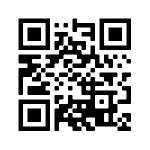 Dr. Laura Riffel has more than 40 years of experience. She has trained thousands of teachers, parents, counsellors, psychologists, administrators and even bus drivers on how to make data-based decisions to change behaviour. Dr. Riffel began her career volunteering at the school for the blind, which led to her love of children and special education. She has taught pre-kindergarten through to adults in general and special education. Now retired from public education, she presents seminars worldwide on behaviour at the universal, targeted, and intensive levels.
Dr. Laura Riffel has more than 40 years of experience. She has trained thousands of teachers, parents, counsellors, psychologists, administrators and even bus drivers on how to make data-based decisions to change behaviour. Dr. Riffel began her career volunteering at the school for the blind, which led to her love of children and special education. She has taught pre-kindergarten through to adults in general and special education. Now retired from public education, she presents seminars worldwide on behaviour at the universal, targeted, and intensive levels.
Click or scan the QR code to learn more about Dr. Riffel.
Challenging Behaviour and Behaviour Support
Dr. Riffel: On reflection, there are two things in my career I’m most proud of. The first is a statewide program called the Behavioural Intervention Programme, where we had five full-time behaviour therapists. If you had a student who had challenging behaviour, you could contact us for free. One of our behaviour therapists would then come to your location and help you figure out the function behind the child’s behaviour. Once the function was identified, the therapist would help you devise a plan to modify that behaviour. It didn’t matter if you were a parent, a daycare centre, a school or a residential setting. We would come and support you in modifying that challenging behaviour. We could have served many more children than we did, but I had to keep the numbers manageable for the behavioural therapists doing that work. While my staff were out doing the Behavioural Intervention Program, I ran a day clinic for the children with the most severe behaviours, where we brought the kids into the clinic to work with them. We were very successful at being able to transition them back into their home or school and restabilise them after that transition. Then we would reverse integrate a class around this highly trained team of teachers we had worked with to ensure the return transition was successful.
The second thing I’m very proud of is that my husband, I, and our whole family, chose to live with an adult who had autism. Let’s call him Jay. Jay, wanted to live independently, and they needed housemates to make that happen. When my husband and I became empty nesters, and our kids were in college, we didn’t like the empty nest syndrome, so we asked Jay’s parents if we could live with Jay. We loved it so much that we decided to live with Jay until we needed to live in a nursing home. Unfortunately, Jay passed away in 2009 due to a sudden heart attack. He was the best teacher we ever had as he taught me what it’s like to live with a disability and how to build a quality life for that person.
Another driving force was when I was in kindergarten. My mother had to take me to school every day and drop me off; one day, she didn’t come back and get me, which was quite scary for a five-year-old child. Eventually, my grandmother came and picked me up, she was nervous and upset about something, and when we got home, my mom was crying. She kept repeatedly saying, “if only I’d said hold on”. She was beside herself. What had happened was my mother had dropped me off that morning at kindergarten. As she was driving away, my little two-year-old brother opened up the car door as she was going around the corner, and she said the words, “don’t let go”. What my brother heard was “let go”. We didn’t have seatbelts or car seats in the fifties, so he just fell out of the car while she was driving.
My mother internalised this accident as her fault. She believed if she had said ‘don’t let go’ differently, it might not have happened. It made her analyse her parenting, and she realised that kids don’t hear the first word, like don’t, stop, quit, etc., that are spoken. They hear the last words. From that point forward, my mother changed her parenting style, and she told us she wouldn’t tell us what not to do, but here’s what I want you to do instead. Years later as a teacher, I heard about this thing schools were trying called Positive Behaviour Intervention and Supports (PBIS), and they said, we’re going to tell the kids what to do instead of what not to do, and that just made so much sense to me, and I jumped right on that bandwagon!
![]() A Trauma-informed Approach to Positive Behaviour Support
A Trauma-informed Approach to Positive Behaviour Support
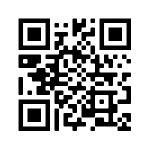 Positive Behavioural Interventions and Supports (PBIS) provides an effective multi-tiered framework for incorporating the knowledge about childhood trauma into an established system of support, rather than focusing on trauma as a separate and perhaps competing initiative.
Positive Behavioural Interventions and Supports (PBIS) provides an effective multi-tiered framework for incorporating the knowledge about childhood trauma into an established system of support, rather than focusing on trauma as a separate and perhaps competing initiative.
Following the Interconnected Systems Framework (ISF) process for integrating PBIS and school mental health into a single system (Eber et al., 2019), trauma-informed practices become part of one multi-tiered continuum of support, benefitting from the structures that contribute to efficiency and effectiveness. Learn more by watching this animation from the National Disability Services [6:24]. Click or scan the QR code to start watching.
The Teach, Imprint, Practice and Praise (TIPP) Method
Dr. Riffel: We can’t hold kids accountable for behaviours if we haven’t taught them what those behaviours look like, sound like and feel like. We can’t hold kids accountable for behaviours if we haven’t taught them what those behaviours look like, sound like and feel like. So I talk to people about what I term the TIPP (teach, imprint, practice, praise) method.
You have to Teach the behaviour you want to see. You can’t just say, “be good”. You’ve got to teach what you expect. For example, this is what I mean by being respectful, responsible and prepared or whatever your focus is. Then you have to Imprint it by modelling. That’s the I in TIPP. So often, the schools that I work with will have the words up on the wall, be respectful to your teachers. Still, in the hallway, kids are overhearing things being said that are not very respectful about teachers or each other. We’ve got to imprint it by modelling what we want to see for the kids, and then we must practice it with them.
Practice is the first P in TIPP. If we want to talk about behaviour on the bus, we need to bring a bus out to the school and show them what that behaviour looks, sounds, and feels like on that bus.
Then the last P in my TIPP is to Praise approximations when you see them. Generally, people don’t really like that one because they think kids should do it because they should do it. But how do you know what’s extrinsic value or intrinsic value? If you are not extrinsically motivated to behave a certain way, you will unlikely internalise this behaviour or expectation. If you think about a baby learning how to walk, people clap and cheer, and the baby knows he’s on to something and must keep doing it.
Once you learn to walk, you walk everywhere. Nobody claps or cheers because you internalised that that was an excellent way to get around. And you’ll know that a child has internalised that value or behaviour because if you compliment them, they’ll go, “oh, that’s okay, it was just the right thing to do”. When children move to internalise these behaviours, we call that the universal level.

Then there are the kids who need ‘booster shots’ or tier-two interventions. These children need a reminder: “now remember, before we go out in the hallway, where do our hands and feet need to be?” Or maybe you have a secret signal with a student. For instance, I had a child who had ADHD and was very hyperactive. Sometimes his hyperactivity would be very disruptive to all the kids around him. He and I had a secret signal that if I tugged on my ear, he needed to check himself and ensure he wasn’t bothering someone around him. Only he and I knew that secret signal, and he wasn’t singled out because he needed extra support. It was like a tier-two intervention because his individual booster shot helped him. He got the universal support, everybody gets those, but on top of that, he also had a little tier two booster shot. Teachers often do these things naturally and don’t even realise they’re doing a tier two intervention. Then there’s a minimal number of students who need those tier three interventions that are more intensive.
We once made a video with a student of what ‘raising your hand’ and ‘waiting to be called on in class’s sounds like and feels like. In this example, we included the parents and asked them to show the video at home before the student came to school each day, and then we gave him booster shots during the day and little reminders of what he needed to do. Then at night, when the child goes home, the parent might ask, “how did you do today remembering to raise your hand and waiting to be called on”? Another intervention, for that example, might include the teacher wearing a bright red bracelet on their wrist. Every time they want students to raise their hands, the teacher holds up their hands with that bright red bracelet. Previously though, they’ve taught that child in private to tune in to that red bracelet.
Dr. Ayre: What a great visual reminder for students. It doesn’t single any child out. You’ve taught the student previously to tune in to it.
Dr. Riffel: Students need environmental cues to help them, and we could use various things. For example, they could wear a watch that vibrates every 15 minutes, which reminds them to check in on themselves. They could use a tracking sheet where they make a tally of the things they’re working on, for example, each time they’re out of their seat or wandering around. Nobody else knows that the student has this plan to help them be successful. Environmental cues are everywhere. For example, when we board a plane, no matter how many times we’ve flown before, the flight attendant stands in the middle of the aisle and holds up a seat belt and says, “you insert the flat end into the buckle, to release the seat belt you lift the buckle”. The first time I heard that I thought, well, that’s ridiculous, that’s a seat belt. Then after they go through that little spiel about the seatbelt, they say they cannot take off until everybody has their seatbelt fastened. The flight attendant then walks down the aisle, leans over and says, “please buckle your seat belt” or “I’m sorry that your building’s burning down, but you need to get off your telephone, so we can take off”. Such different levels of support, they’re alive and well everywhere. At school, we talk about different levels of support, and if you start looking at the world around you, they’re alive and well everywhere you go. It’s no surprise that children need help and support as they learn, while adults in the world need the same intensive support.
![]() Trauma-Informed Social Emotional Learning
Trauma-Informed Social Emotional Learning
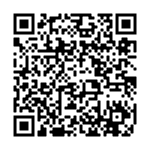 Social and emotional learning is about learning how to control & express feelings, manage friendships and solve problems. Children who have developed social and emotional skills and it easier to manage themselves, relate to others, resolve conflict, and feel positive about themselves and the world around them. This guide is designed to be a comprehensive collection of trauma-informed SEL strategies, activities and resources.
Social and emotional learning is about learning how to control & express feelings, manage friendships and solve problems. Children who have developed social and emotional skills and it easier to manage themselves, relate to others, resolve conflict, and feel positive about themselves and the world around them. This guide is designed to be a comprehensive collection of trauma-informed SEL strategies, activities and resources.
Click or scan the QR code to access the free resource.
Thinking Functionally About Behaviour
Dr. Ayre: What key elements of thinking functionally about behaviour are essential for teachers to know and utilise in their classroom?
Dr. Riffel: We first need to help everybody understand that they don’t need to do something immediately unless a child is in danger. We need to learn how to take a deep breath and think about that behaviour. We need to learn how to take a deep breath and think about that behaviour. That’s the hardest thing in understanding and learning what to do. We know this behaviour is happening for a reason. It’s communication. This student is communicating something to me somewhere, and somehow, someone has taught them, usually inadvertently, that this behaviour has a particular payoff. It’s like learning the child’s secret code and figuring out what this child wants.
What I teach to teachers, and even to veteran teachers who’ve been teaching for a long time, is that there are three things that children might be trying to get. Firstly, they might be trying to get attention. Secondly, they might be trying to get access to a preferred item or a preferred activity. Lastly, they might be trying to gain sensory input. Sensory input is something we don’t talk much about at the service level, and it’s enormous with us as adults and with children. Often when you are teaching college classes, you’ll look out and see people giving themselves proprioceptive input (see video below to learn more about proprioception and sensory modulation). That is, they are fidgeting and fiddling with things, or they’re doodling on their paper to be able to sit and pay attention effectively. We must understand that we haven’t taught kids how to get that sensory input in a socially appropriate way. Those are the things that kids are sometimes trying to get.
![]() The Proprioceptive System and Sensory Modulation
The Proprioceptive System and Sensory Modulation
 Proprioception is the process by which the body can vary muscle contraction in immediate response to incoming information regarding external forces, by utilizing stretch receptors in the muscles to keep track of the joint position in the body. Proprioception, also often referred to as the sixth sense, was developed by the nervous system as a means to keep track of and control the different parts of the body.
Proprioception is the process by which the body can vary muscle contraction in immediate response to incoming information regarding external forces, by utilizing stretch receptors in the muscles to keep track of the joint position in the body. Proprioception, also often referred to as the sixth sense, was developed by the nervous system as a means to keep track of and control the different parts of the body.
Click or scan the QR code to watch a video from Brain Highways explaining the proprioceptive system [4:36].
Children also communicate through behaviour things that they might be trying to avoid, such as schoolwork. It might be because the work is too tricky or because they are dealing with something emotional and cannot take on new information at the moment. They might be trying to avoid attention. Usually, this attention is from the adults because they will ask them to do something they might not feel comfortable doing. They also might be trying to avoid other children, and that might be because their mom doesn’t do laundry as frequently as most moms do. They had to wear dirty clothes; they know they smell a little and don’t want to get around other kids because they smell. It’s like playing detective, and we’re always trying to decipher what a child’s behaviour is telling us.
Children can also have challenging behaviour because they’re trying to avoid emotional or physical pain, especially young children or children who don’t use words. They don’t have enough words to explain the pain they’re feeling. They don’t want shirts that say mom and dad had a huge fight last night, or we got kicked out of our apartment, and our furniture is on the front lawn, and I don’t know where I’m sleeping tonight.

The last thing children might be trying to avoid is too much sensory input. I always find it amazing how many people are bothered by noise. We’ll talk about different little noises, and I get teachers to imagine hearing that one noise that drives you over the edge but ten times louder. For some children, too much noise can make it difficult to attend, concentrate and learn, so they may try to avoid situations or environments that are overly noisy. I often hear from teachers that children are just behaving in a particular way to get attention. I want to tell you that it is vital for everybody to remember that it’s true that children do want attention, but we need to understand why. As a society, we’ve decreased time spent together in the same space by about 63 per cent. During the 1950s, we frequently sat at the dining room table as a family. Only rich people had television sets then, and if they had a TV, they only had one, so we had a lot of face-to-face time with our family. We played outside more, hugged each other more, and dug in the ground like we were searching the other side of the world and all those physical play activities. As a result, we made and received eye contact with others and got their attention.
In today’s society, we’ll go to a restaurant to eat, and eight people will sit together at a table. Yet you look over, and all eight people look at their phones rather than interacting. Kids are desperate for eyeballs and attention. If we give them attention before they start seeking it, we’ll avoid the problematic behaviours children use to gain the missing attention. If we give them attention before they start seeking it, we’ll avoid the problematic behaviours children use to gain the missing attention. This is the proactive part that I want teachers to utilise in their classrooms.
I’ve found with the teachers that I’ve worked with, if you stand at your door and greet your students every hour or every time they come back to class at the elementary level, every hour for secondary, I tell them to do TUMS (touch, use their name, make eye contact, smile).
Consistently throughout the day, we need to Touch, give them a high five or a handshake; Use their name in a positive way, for instance, “how is P.E. Charmaine?” or “glad to see you today, Ferris”, this shows that you’ve taken an interest in them; Make eye contact, give it on the front side in a positive way; and then Smile. Because we’re so busy thinking, sometimes we don’t think about what we’re doing with our faces. Sometimes our faces don’t look very friendly, and kids get most of their information about us from our body language. We need to make sure we’re smiling most of the time. Teachers who have done this have found 45 to 72 percent fewer disruptions in their classroom, supporting the notion of giving eyeballs or attention on the front side. We’ve timed it, and it takes about three minutes, and it’s worth the three minutes.
When you think about how long the disruption of children seeking your attention stops learning, that three minutes is time well spent. The older the kids are, the more critical it is to give that attention straight away. Most teenagers’ primary mode of communication is texting, so they’re not getting the face-to-face feedback and attention they need for their development. So you see, if we put iPad holders on baby strollers, they will not get the face-to-face feedback they need for early development. Imagine what that’s going to do to those kids’ brains by the time they’re teenagers.
If I could only share one piece of advice with teachers, that would be to be proactive. What’s the function of the behaviour? And what can you put in place before that behaviour has a chance to happen? I think greeting them at the door will make a world of difference.
![]() Observing Behaviour and Thinking Functionally
Observing Behaviour and Thinking Functionally
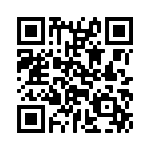 Thinking functionally about disruptive student behaviour assumes that behaviour is maintained by something in the environment where the behaviour is happening. To find out why or the function, we examine the antecedents, the behaviour, and the consequences. That is, we watch or observe the behaviour directly and document the A, B and C of that disruptive behaviour.
Thinking functionally about disruptive student behaviour assumes that behaviour is maintained by something in the environment where the behaviour is happening. To find out why or the function, we examine the antecedents, the behaviour, and the consequences. That is, we watch or observe the behaviour directly and document the A, B and C of that disruptive behaviour.
Click or scan the QR code to learn more from the Trauma Informed Behaviour Support book.
Implementation
Dr. Ayre: I’ve witnessed several teachers who have seen the value in this form of behaviour support. But when the school is not supportive, the teachers try to implement these practices in isolation. What advice do you have for teachers in this situation?
Dr. Riffel: It is tough to implement behaviour support in isolation, but I tell teachers that success sells. It is tough to implement behaviour support in isolation, but I tell teachers that success sells. For example, I know of a fourth-grade teacher who supports PBS, yet her school is not buying into it too much. She did everything she knew she was supposed to do. She created expectations for her classroom, taught them, imprinted them by modelling, practised with the kids, and praised it. Now it’s later in the year, and her kids are all still following the expectations. For example, they’re supposed to walk on a specific side of the hall, and they’re supposed to have their hands a certain way, they’re supposed to stop at the stop signs when they get to corners and look both ways before they cross the hallway; they’re not supposed to go inside the classroom until the teacher sends them in, that way kids aren’t inside a classroom without adult supervision. All the other teachers’ kids are running in the classrooms, past stop signs in the hall, and generally not following the rules. Yet, at a grade level meeting, another fourth-grade teacher asked, “how come your kids are doing what they’re supposed to be doing and ours aren’t?” and this teacher said, “let me tell you about PBS”. She’s been able to sell it to the other fourth-grade teachers, and now it’s starting to catch on.
Teachers now see the value in taking the time to do these things rather than saying, “I shouldn’t have to do that. Kids should just know how to behave”. To those teachers, I ask, “how’s that working out for you?” If it’s working, go ahead, but if it’s not working, why not try doing what you see is working well? Remember, success sells. You just plug along, do what you know is right, and let your kids be the shining example. When I was teaching a class, I used to tell my kids it was a secret. They couldn’t tell anybody else, but the principal liked me better than everybody, so he always gave me the best kids. The kids just walked around like little angels because they thought they were the best fish in the school!
Dr. Ayre: And the kids think they’re all special and chosen. That’s great!
Dr. Riffel: It probably wasn’t very nice because they were out on the playground thinking they were better than everyone else. But it did help change their attitude because I told them, “I expect you to be role models, and kids will rise to that occasion.” When the other teachers see that, they’ll want to buy in, which used to happen in the behavioural intervention program often. We would come in and help with one student. We would support the teachers in looking at the data and determining the behaviour’s function. Once that student’s behaviour changed (and everyone in the school knew this kid because of his behaviour), suddenly, I’d get five referrals from that school. They saw the success and what that one teacher did by collecting the data and changing things up. That’s when I would call the principal and ask if I could come in to do an all-day training on functional behaviour assessment and teach the whole staff.

Dr. Ayre: It makes sense to empower all the teachers and upskill everyone at once.
Dr. Riffel: Yes! So just remember, success sells. That’s how you’ll get the whole school’s buy-in.
Behaviour Support for Unsafe Behaviours
Dr. Ayre: As teachers, we sometimes neglect to look at ourselves and the contribution of our behaviour and we may project all the blame onto the child for the problematic behaviour.
Dr. Riffel: It’s very easy for me to come in and sit back and say the teacher’s part of the problem. So I try to be very delicate in how I see it. It’s like we don’t notice things about our kids as they are growing up. You didn’t notice how tall they were getting until some distant Aunt visited that hasn’t seen them for months and months. They say, “oh my gosh, you’ve grown like a weed,” and suddenly, you look at your child, and you’re like, “oh my gosh, you’re right”! But you’re there day to day and don’t notice it happening. That same thing happens in the classroom. We don’t realise that some of our actions are causing us pain. We don’t realise that some of our actions are causing us pain.
For example, we got a referral for a little girl who was burping the alphabet. While not the worst thing in the world, it was very obnoxious. It made you feel ill and was disruptive to the whole class. The teacher who referred her said she does it all day, every day, and there was no rhyme or reason to it. We came in and took ten days of data and found that every time there was a transition, this little girl started burping the alphabet. It happened 20 times in 10 days. About twice a day. And every 19 out of 20 times, the teacher ran over and gave her attention every time she burped. Now the attention was a little bit different each time. Sometimes the teacher would be directive, sometimes, she’d offer her choice, but it was always the teacher giving her some attention. When we showed the data to the teacher, I said, “let’s think proactively. How can you give the girl attention on the front side to stop that burping behaviour”? After some thought, we made the little girl Vanna White, and we made her the host of a daily schedule in the classroom. Vanna White is in a game on TV in the United States, and she’s a model who gets paid millions of dollars to turn the letters over in the game. We made this little girl the spokesperson for the daily schedule. It made the teacher pull her over and tell her what they were doing next before the transition, so the little girl would get up and then flip the schedule. She’d flip what was finished backwards and then say, “class, it’s time for reading. Please open your reading books to page 147”. That gave the little girl a replacement behaviour that got her attention on the front side. She only burped one more time, and I believe just to test the water a little bit.
We also told the teacher if she burps, ignore it, look the other way, and give attention to another student. Then as soon as she’s quiet, give her attention.
Another example of teachers causing their own pain is when I worked with a school when I ran the day clinic. We had a child who, from age three to 11, who had autism and intellectual disabilities and didn’t use words to communicate, jumped up and down for hours a day screaming. At the end of four hours, he would go horizontal with his mouth open and bite. Every time he did that from three to 11 years old, so for eight years, the school called mom and said, “Mom, come get your child”. What they did without realising it was to cause their own physical pain. Somebody got bit every day. They inadvertently taught the child that if you scream for four hours and bite somebody, you get to go home, and that’s exactly where this child wanted to be. They inadvertently taught the child that if you scream for four hours and bite somebody, you get to go home, and that’s exactly where this child wanted to be. When we bought him into the clinic, we padded ourselves up so that he couldn’t hurt us, and I taught everybody in the clinic how to avoid bites and how to block a bite. We wore arm pads on our arms, and most women had been bitten in the chest area as that was his height and that’s the area he would come for, so we had an umpire vest under our clothes, and shin guards on our arms, and we could put our arm up so that he would bite our thickly padded arm, and we just acted as if nothing happened. We gave him no attention at all. Then I told mom, “go get a job. I promise you I will never call you to come to get this child because of biting or behaviour for any reason”. I said, “I’ll call you and tell you good things, but I’m never going to contact you and ask you to come to get your child”. He stopped biting within three weeks and wasn’t showing that behaviour anymore. He caught on quickly that that behaviour doesn’t pay off anymore. He ended up doing all the same work as all the moderate students. He really was quite brilliant. The teachers had just caused their own pain by sending him home and accidentally creating a pattern.

Key Classroom Strategies
Dr. Ayre: Are there any key strategies you would recommend for teachers to use with students whose behaviour would be red zone behaviour in that tertiary level?
Dr. Riffel: The most effective strategy is to think proactively. When you get home at night, go through the behaviours that happened and think about these three things I call the triple T’s: 1) Trigger – What was the trigger that set that behaviour in motion? A lot of times, we don’t think there is one. If we reflect on an incident, we can often identify a trigger. We need to know that trigger so we can intervene before the trigger occurs next time; 2) Target behaviour – What is the behaviour you want to target for change? We used to call this the ‘bad’ behaviour and the ‘problem’ behaviour. The truth is, though, that makes you think negatively about the child. Thinking negatively about the child sometimes makes you think you want the child to disappear, when in fact, we don’t want the child to disappear, we want the behaviour to disappear. Thinking negatively about the child sometimes makes you think you want the child to disappear, when in fact, we don’t want the child to disappear, we want the behaviour to disappear. I call this the trigger in the target; 3) ImpacT – in a way, it is the consequence of the change we want. The word consequence confuses people because they think of consequences as punishment rather than the impact of something. So those are my triple Ts. What were they wanting, or what were they getting out of having this behaviour? Sit down at the end of the day, and if you can write those three things down, you can proactively put a plan in place that’ll be effective.
You need to put three things in place when considering a plan for any student, and I call them the triple Rs. The first thing that you have to do is revise the environment to set the student up for success. That might be the red bracelet you wear or some little secret code you’ve set up in the background. It might be a particular worksheet you give the student where you give them double what you want them to do. You then tell them they can only do half, so they have some autonomy over which problems they do. They’re the proactive environmental strategies that you might implement to help the student succeed.
The second R stands for replace, replace the behaviour. We can’t just say don’t, stop, quit, or no. We’ve got to teach students what we want them to do instead. For example, teaching a student that when you’re feeling all bouncy, and you feel like you need to get up and run around the room, here’s a stretchy band we’re going to put on the two front legs of your chair. Please put your feet on it and bounce your feet when you feel the need to get up and run around. This gives the student some replacement behaviour that will help them proactively with what they need or want to do or provide the input they seek.
The last R is to reframe our response. This one’s the hardest to do and the one we hate the most. Suppose we haven’t taught the student a replacement behaviour. In that case, we can’t be angry with them for running around the room because we haven’t taught them what to do instead. If teachers could use the triple T and triple R approach to intervention, it would help those kids in the red zone, which in turn will help you go home at night feeling much more relaxed. I like to tell teachers, let’s take one behaviour and focus on that. If you can get that one behaviour under control, what happens is a lot of the other behaviours disappear.
Dr. Ayre: It’s like a domino effect.
Dr. Riffel: It really is, so don’t try to focus on all eight behaviours that you want to change. What is the one behaviour that would make your life better if it went away? Start your journey in helping the student there – small goals and small steps quickly lead to big changes. Small goals and small steps quickly lead to big changes.
Chapter Summary
- Students can’t be held accountable for behaviours if we haven’t taught them what those behaviours look like, feel like and sound like.
- TIPP method is used to Teach, Implement, Practice and Praise when teaching new behaviours.
- Behaviour is communication. Students may be trying to get to something or away from something, or seeking sensory input by using problematic behaviour.
- Use TUMS as a proactive means of giving attention; Touch, use their name in a positive way, make eye contact & smile.
- Be aware of accidentally reinforcing problematic behaviour.
- Use the Triple Ts to think about behaviour; What was the Trigger? What is the Target behaviour for change? What is the ImpacT or the change you want to see?
- When considering a plan for change, use the Triple Rs; Revise the environment; Replace the behaviour; Reframe your response.
![]() Listen to the full interview on the Trauma Informed Education Podcast
Listen to the full interview on the Trauma Informed Education Podcast
References
Ayre, K. (Host). (2017, December 3). Preventing challenging behaviours with Laura Riffel (Episode 55) [Audio podcast episode]. In Trauma Informed Education. https://soundcloud.com/trauma-informed-education/preventing-challenging-behaviours-with-laura-riffle
Ayre, K., & Krishnamoorthy, G. (2020). Trauma informed behaviour support: A practical guide to developing resilient learners. University of Southern Queensland. https://usq.pressbooks.pub/traumainformedpractice/
Brainhighways. (2010). Brain highways: The proprioceptive system. [Video]. YouTube. https://www.youtube.com/watch?v=b2iOliN3fAE
Eber, L., Barrett, S., Perales, K., Jeffrey-Pearsall, J., Pohlman, K., Putnam, R, Splett, J., & Weist, M.D. (2019). Advancing education effectiveness: Interconnecting school mental health and school-wide PBIS, Volume 2: An implementation guide. Center for Positive Behavior Interventions and Supports. University of Oregon Press. https://www.pbis.org/resource/interconnecting-school-mental-health-and-pbis-volume-2
Trauma Informed Positive Behaviour Support. (2018). Social emotional learning: Child trauma toolkit. A guide for educators. https://www.teacherspayteachers.com/Product/Trauma-Informed-Social-Emotional-Learning-Bundle-Activities-Resources-4061652

